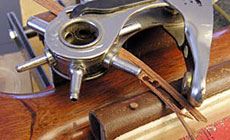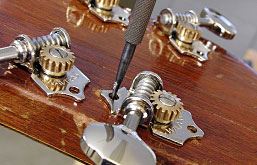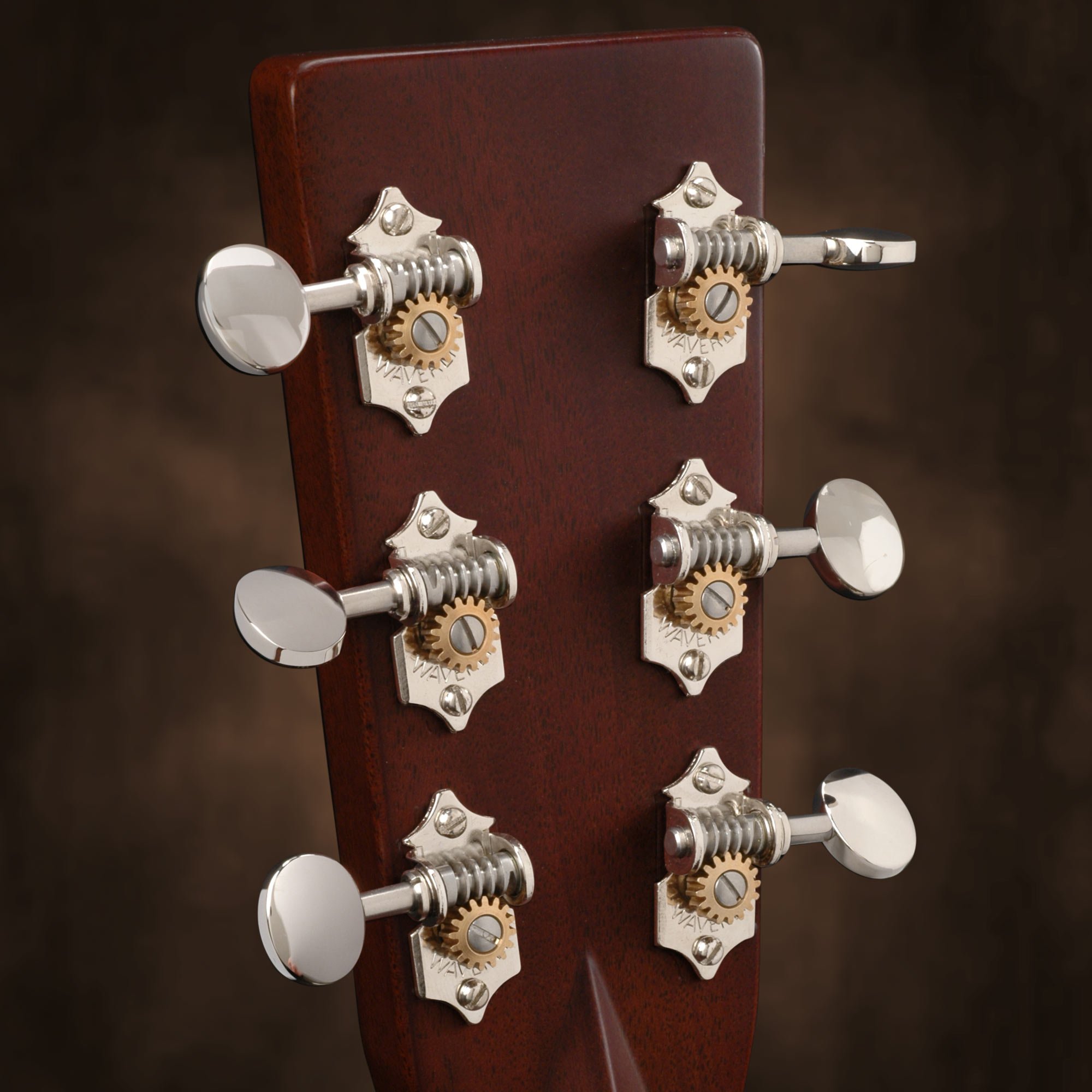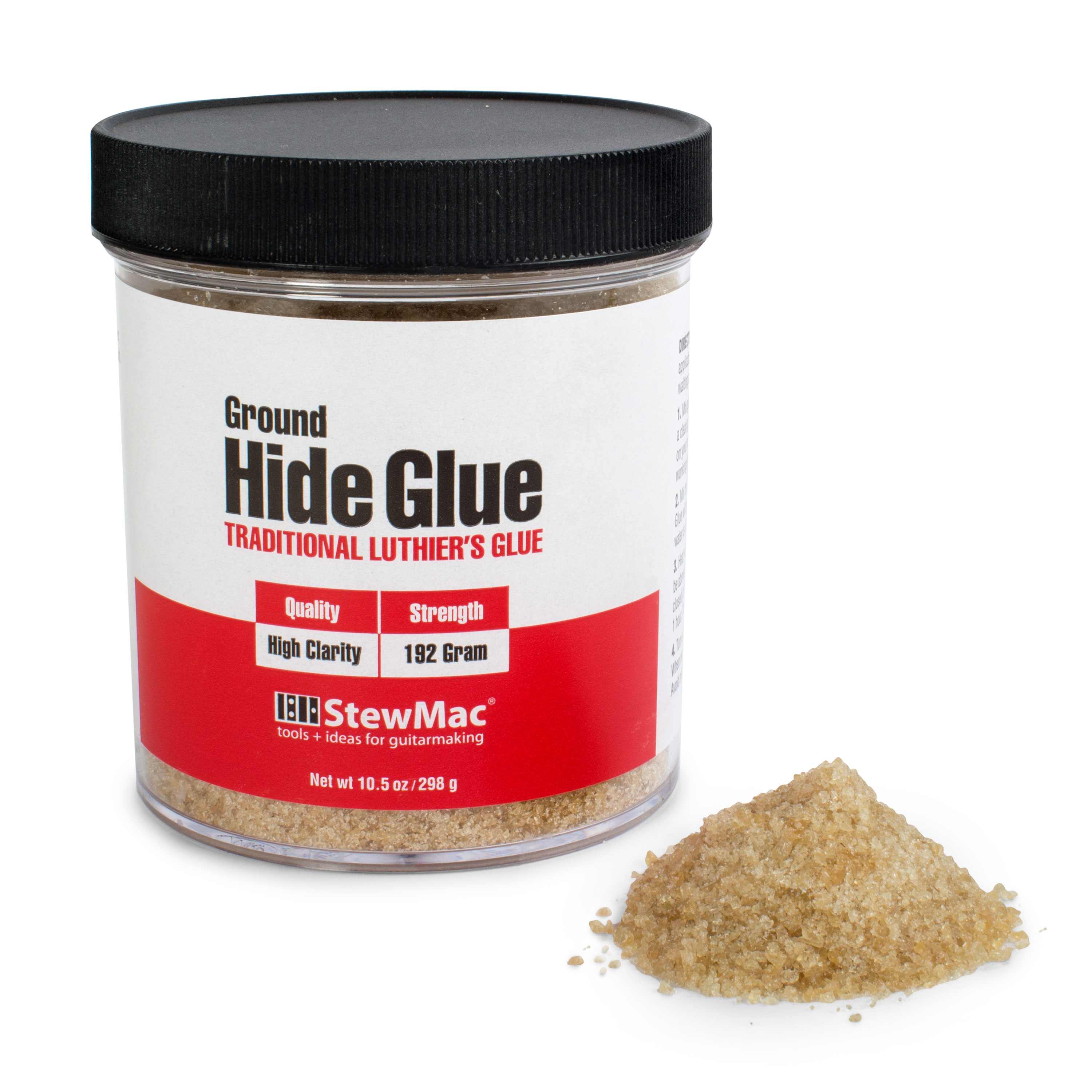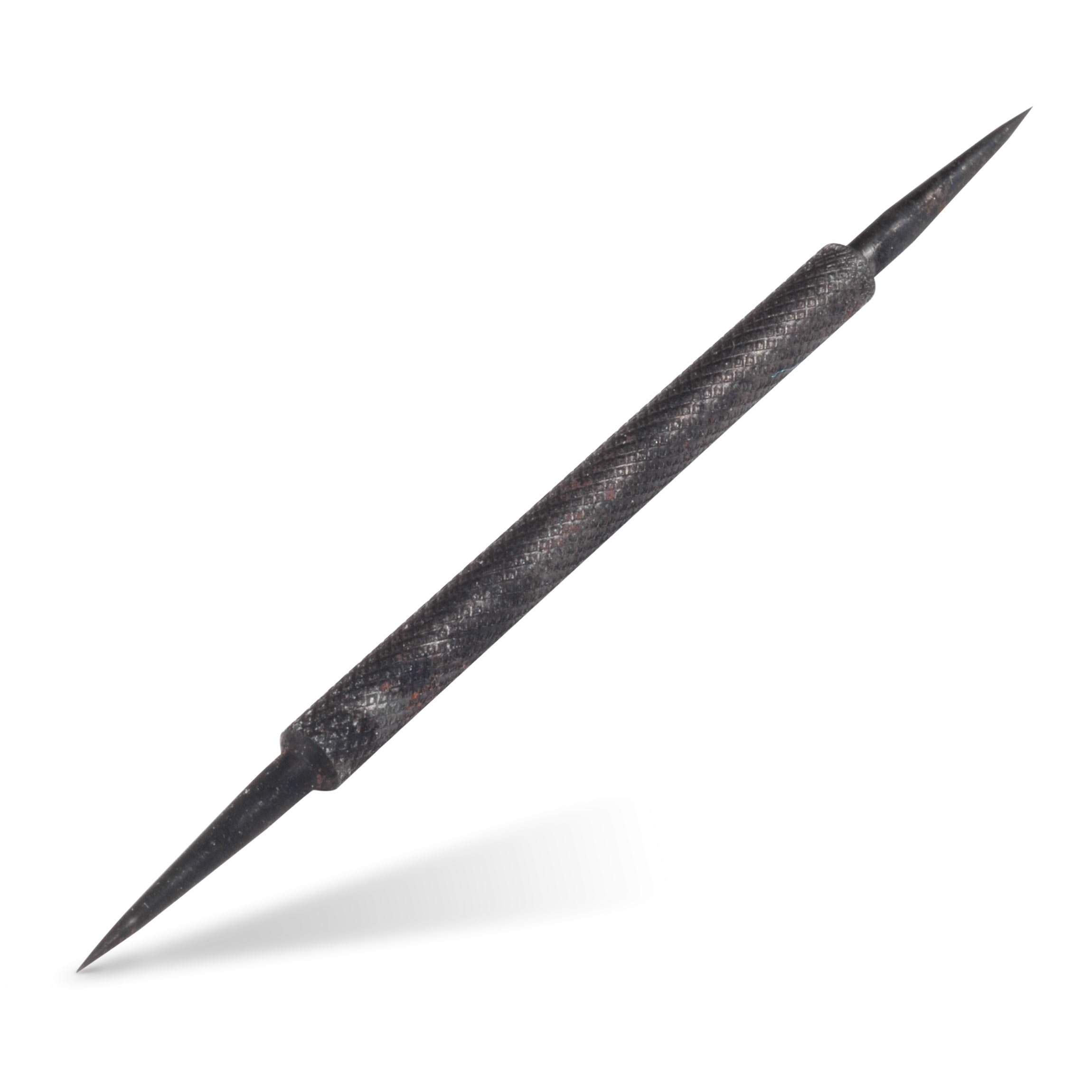Plugging old tuner holes on the back of the peghead
For some jobs, slow and patient technique is the only way to go, but this isn't one of 'em! When installing new tuners leaves you with old holes showing in the peghead, how do you hide those holes? You could completely patch and refinish the back of the peghead — but that’s too pricey for everyday repair jobs. Here’s how I make screw holes nearly invisible, and make my customers happy, too! The arrow points to a hole we need to hide. This National flattop once had three-on-a-plate Kluson tuners — you still see their footprint in the lacquer. Why someone removed them and replaced them with low-quality tuners beats me. They probably had some trouble tuning and figured that new tuners would be better, without thinking about the quality. Today I'm installing a set of new Waverly tuners on this favorite old guitar. Dowels from the hardware or hobby store are generally birch. Not only is Birch the wrong color, but the grain orientation is all wrong: the dowel’s end grain is "looking at you." This end grain is difficult to drill (the drill wants to scoot off-center), and it soaks up stain and finish to become darker than the surrounding wood. I used a scrap of mahogany to match this guitar's neck, cutting small sticks so that the ends show side grain, not end grain. (If you don’t have perfectly matching wood, you’ll find something that's closer than a birch dowel!) Round the ends of these pieces on a belt sander. Sometimes I’ll round the sticks with a chisel just for the practice. It's not hard to do, if your skill with a chisel is as sharp as the chisel itself has to be. (If not, that's what the practice is for!) The holes will be easier to fit if they’re evenly shaped, so I drill them out with a bit that’s slightly larger than the existing holes (and slightly smaller than the plugs, for a snug fit). Drilling also cleans out any polish residue or oil. Lots of people squirt oil onto their tuners, and it leaches into the wood around the mounting screws. I prefer petroleum jelly, using a glue syringe like a grease gun. Use a metal punch to press the plug tightly into the hole, with glue. I use fresh hot hide glue, and press the plug so it’s just slightly below the surface. This gives me a small “dish” to fill with a drop of finish. For finish touchup I like to use the same hot hide glue that I that I used for gluing the plugs. I color it with a dab of tobacco brown ColorTone stain — it doesn't take much, and won't affect the drying or hardness of the glue. I place a drop of glue on the plug and let gravity level it. Hide glue dries hard and brittle, just like the aged lacquer finish, and looks better than any superglue or lacquer drop-fill.Plus, it's a one-time drop-fill. It levels perfectly after drying, with no shrinkage requiring repetitive coats. A piece of mahogany veneer and a leather punch will create perfectly round dots to cover the plugs, too! Before drilling new screwholes, I use a tracing scribe (intended for inlay work) to create a starter hole. The scribe’s a lot sharper than an awl, and it's so slim that I can see exactly where its point is touching; bigger tools block the view.A quick way to get rid of old holes in the back of your peghead
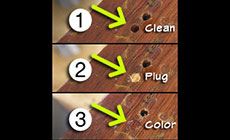
Make screw holes (almost) disappear without a fuss
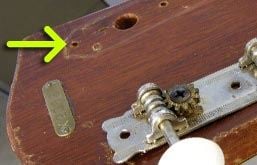
Don’t use a dowel to plug the hole.
Make your plugs from scrap wood that matches the neck
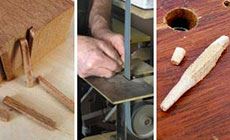
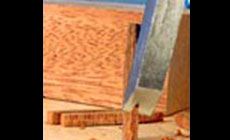
Redrill the holes to make them round
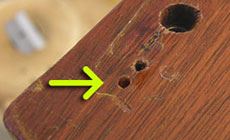
Press in the plug...
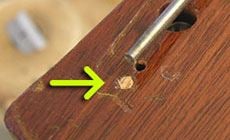
...and hide it
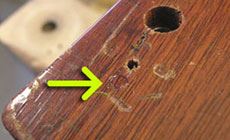
An alternate way to hide plugged holes
